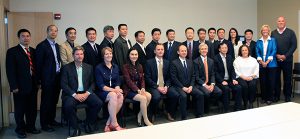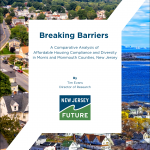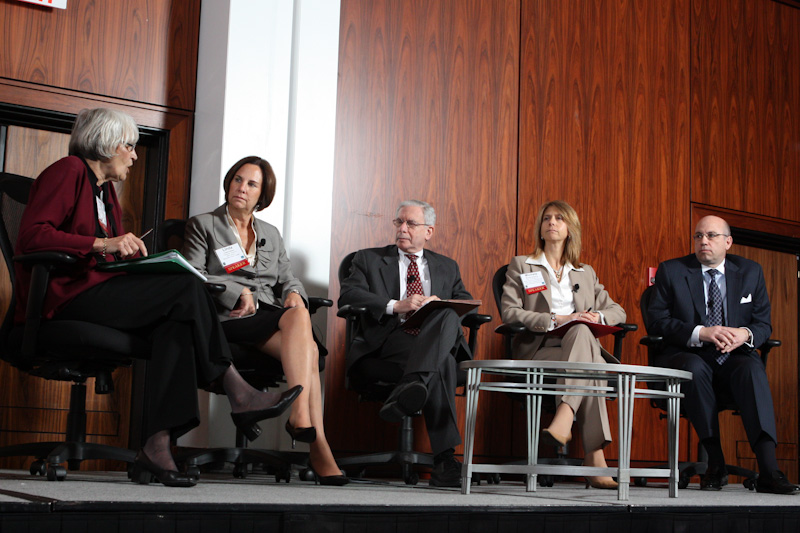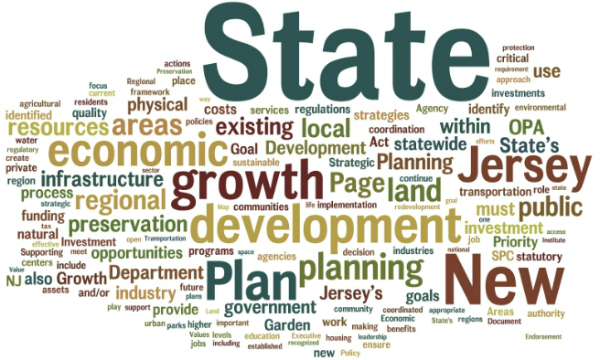New Jersey Future Blog
New Jersey Recovery Fund Shares Post-Sandy Resiliency Lessons With Chinese Delegation
October 12th, 2016 by New Jersey Future staff
This article originally appeared on the Geraldine R. Dodge Foundation blog, and is cross-posted here with permission.

Members of the Guangxi Zhuang Autonomous Region Emergency Management Office met Sept. 29 with representatives from the New Jersey Recovery Fund at the offices of the Geraldine R. Dodge Foundation.
A delegation of Chinese officials made a stop in Morristown recently to learn how New Jersey’s philanthropic sector helped strengthen communities for the long term following Hurricane Sandy.
The visit on Sept. 29 was part of the Guangxi Zhuang Autonomous Region Emergency Management Office’s 21-day trip to Washington, D.C., and New York to hear innovative approaches to disaster response. The trip included meetings with officials from FEMA, the Government Accountability Office, the New York City mayor’s office and the New York Fire Department.
At the Geraldine R. Dodge Foundation’s office, the 20-member delegation heard from representatives from the New Jersey Recovery Fund, a joint effort among local and national foundations, corporations, and individuals that united after Sandy. Immediately after the storm slammed into New Jersey’s coast, the New Jersey Community Foundation established the fund and partnered with Dodge to raise more than $7 million, which was quickly awarded to 25 recovery projects led by partners spanning environmental, media, education, arts, housing, and planning organizations.
“In the United States, we have government and charitable organizations that step in to serve immediate needs after a disaster,” said Hans Dekker, president and chief executive officer of the Community Foundation of New Jersey. “The New Jersey Recovery Fund focused on the mid- and-long-term issues of recovery and the decisions about how we rebuild.”
One of the projects, led by New Jersey Future, was deploying local recovery planning managers to provide assistance to six communities hardest hit by Hurricane Sandy — Highlands and Sea Bright in Monmouth County, Tuckerton and Little Egg Harbor in Ocean County, and Commercial and Maurice River in Cumberland County.
In the early days of the relationships, these recovery planning managers assisted as “gatekeepers” and points of contact for the multitude of offers of assistance to communities, freeing up local leaders to focus on immediate relief.
Teri Jover, New Jersey Future’s deputy executive director, shared how these early efforts helped recovery managers build trusting relationships with local leaders and helped pave the way for more in-depth conversations and exploration of how communities could move from immediate relief to long-term recovery.
“What was important to us was getting to the discussion of future risk,” Jover said. “We know there’s sea-level rise coming — it’s already beginning to happen, so how do we talk to the residents of those communities about the risks they’re facing?”
The recovery managers created maps for each town that factored in sea-level rise projections showing the flooding threats, structural damages, and financial risks residents and officials should expect from future storms. The maps, Jover said, brought home the challenges communities face, which made it easier to have informed conversations to address vulnerabilities and confront risk.
Tim Dillingham, American Littoral Society’s executive director, shared how the organization worked with partners from the public and private sectors to restore beaches under an extremely tight deadline to ensure that they were ready for the endangered red knots and the imperiled horseshoe crabs on which the birds depend.
His team removed 822 tons of rubble, pilings and old bulkheads from beaches – much of which would have posed insurmountable obstacles to horseshoe crabs seeking to breed. They trucked in 1,517 truckloads of sand to restore just over a mile of damaged horseshoe crab habitat. The effort was successful, thus avoiding a natural catastrophe for the migrant shorebirds.
“Like the rest of the state, the Delaware Bayshore was hit hard by the storm,” Dillingham said. “We had the ability to work with all sorts of partners. One of the unique aspects of NGOs like us is we are not only able to be innovative and test out new approaches, but we are not bound by same restrictions as government so we can act much faster.”
“Think beyond infrastructure rebuilding – think about how you rebuild people’s lives.” — Elizabeth Murphy
“We would not have been able to accomplish this so fast without private dollars,” he said.
The Council of New Jersey Grantmakers held weekly calls with philanthropy leaders from New Jersey and colleagues across the country who shared their experience and expertise on disaster recovery needs, said Nina Stack, the council’s president.
Working with the Center for Disaster Philanthropy and Forum of Regional Associations of Grantmakers, Council of New Jersey Grantmakers collaborated on the Disaster Philanthropy Playbook, a comprehensive resource of best practices and innovative approaches to guide the philanthropic community in responding to future disasters.
Elizabeth Murphy, who led efforts on behalf of the CDP and CNJG to develop the playbook, urged the delegation to consider the full scope of disaster recovery needs of communities, not just brick and mortar rebuilding. Successful disaster response efforts, she said, should take into account habitat restoration, mental health programs, and arts and culture responses that help people process the feelings of loss and learn how to talk about what happened to them.
“In the United States, those things are not traditionally covered by the federal government and are often where private philanthropy steps in,” Murphy said. “Think beyond infrastructure rebuilding – think about how you rebuild people’s lives.”
















